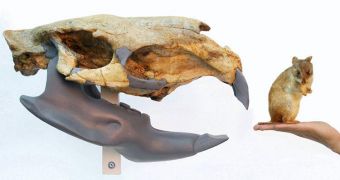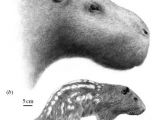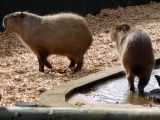Don't be fooled by the humble size of a mouse or rat because their extinct relatives were bigger than cows. And now, the largest rodent ever has been discovered: a one tonne Josephoartigasia monesi, as big as a big bison bull, which lived 2 million years ago.
The impressive skull of 53 cm (1.8 ft) in length was encountered in a broken boulder on the coast of Uruguay by Andr?s Rinderknecht of the Uruguayan National Museum of Natural History and Anthropology, and Ernesto Blanco of the Uruguayan Institute of Physics. Based on the skull's size, Josephoartigasia could have weighed about 1,000 kg (2.200 pounds), turning it into the largest ever known rodent.
But the huge "rat" had relatively small teeth, pointing that it could have rather feasted on soft leaves and fruit. The previous largest known rodent was Phoberomys pattersoni, a 700 kg (1,500 pounds) relative of the guinea pig that inhabited Northern Venezuela about 8 million years ago.
"It is only a matter of time before another, larger rodent is unearthed," said Marcelo S?nchez of the University of Zurich, Switzerland, who found Phoberomys in 2003.
The South American fauna of huge rodents emerged as their diversity boomed after the continent split from North America some 55 million years ago, just 10 million years after the extinction. It received a lot of primitive mammals that filled the void left by dinosaurs. As rodents did not have to compete with hoofed mammals and face fearsome cats and wolves they diversified.
Today, very few species survive from the rodent explosion, the 65 kg (150 pounds) capybara being the most impressive and world's largest living rodent, while the Guinea pig the most popular species.
However, some 2 million years ago, the two Americas had just reunited once more, and a wave of evolved herbivorous and carnivorous mammals flooded South America, like the sabre-toothed cat, deer and tapirs, competing for food and territory with the huge rodents, which subsequently went extinct.
Clime changes could have played their role, as Josephoartigasia was discovered in a now dry area that once was a lush forest.
"Our work suggests that 4 million years ago in South America, 'mice' that were larger than bulls lived with terror birds, sabre-toothed cats, ground sloths, and giant armored mammals," the discoverers said.
But the closest living relative of the Josephoartigasia and Phoberomys is not the capybara or the Guinea pig, but the pacarana, a large white stripped rodent (15 kg or 33 pounds) from the wet tropical forests of Eastern Andes and western Amazon River basin.

 14 DAY TRIAL //
14 DAY TRIAL // 


